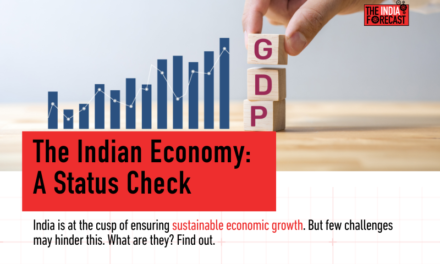By Sanjay Kumar
Maharashtra has long been the country’s economic powerhouse. The state added another feather to its cap recently by becoming the first Indian state to cross the $500 billion economy, contributing significantly to India’s GDP. This latest milestone reinforces its position as a major contributor to nation’s economic growth.
What makes Maharashtra work?
Several factors have been attributed to this growth. Maharashtra has a diverse economy with strong growth in manufacturing, services, agriculture, and information technology. The state has also proactively developed industrial zones and invested in infrastructure, attracting domestic and foreign investments.
According to state chief minister Eknath Shinde, “Davos 2023 marked a turning point for Maharashtra’s economic growth, with investments pouring in at an unprecedented scale of ₹1.4 lakh crore. It was not just a monetary influx, but was also an endorsement of Maharashtra’s potential by global investors, recognising not merely a state but a powerhouse of opportunities. The commitments made during that visit were seeds of progress. Today, those seeds have blossomed into substantial achievements”.
Mumbai, the state’s capital, being the financial hub of India, has contributed majorly to its growth. The city is home to major financial institutions, the Bombay Stock Exchange (BSE), and other multinational companies.
The successive state governments have introduced many business-friendly policies and reforms to promote ease of doing business, attract investment, and encourage innovation.
What can other States do?
Crossing the $500 billion mark is not just a symbolic achievement for Maharashtra, it reflects the state’s readiness for further growth. This economic milestone is expected to attract more investments, create jobs, and uplift the standard of living for the people of Maharashtra.
The state’s successful economic model can be imbibed by other states. Maharashtra’s continuous focus on infrastructure development, technological innovation, and sustainable practices will be crucial in maintaining its growth trajectory in the future.
Its economic development model combines industrial growth, infrastructure advancement, and strategic investments in core areas. The state’s focus on creating a favourable business environment by investing in human capital and promoting sustainable corporate practices has also contributed to its success as country’s economic powerhouse.
Maharashtra is an industrial hub, with Mumbai, Pune, and Nashik home to various industries, including manufacturing, textiles, chemicals, and automobiles. Pune has emerged as a major IT hub. The state has attracted global IT companies, providing a vibrant tech ecosystem.
The state has an extensive transportation network including highways, railways, and ports. The Mumbai-Pune Expressway is a notable example of efficient infrastructure that has enhanced connectivity between major cities. Mumbai’s ports handle a substantial portion of India’s maritime trade, further boosting the state’s economy.
Mumbai’s infrastructure development includes the world-class Metro, which has alleviated traffic congestion and improved urban mobility to a great extent. Other cities are also witnessing improvements in infrastructure and urban planning.
The state has come up with several Special Economic Zones (SEZs) and industrial parks that provide infrastructure and incentives for businesses, attracting both domestic and global investments. Maharashtra offers incentives for investments, including subsidies, and tax benefits.
Efforts have been made to streamline administrative procedures, reduce red-tapism, and improve the overall business environment. This includes initiatives for online services, single-window clearances, and simplified regulations, making the state to hold the first position among Indian states in the ease of doing business rankings.
Maharashtra invests significantly in education and skill development, ensuring a constant supply of skilled labour to various industries. Investments in healthcare and education have improved the quality of life and human capital in the state. Better healthcare facilities and educational institutions contribute to a healthier and more educated workforce.
The state has also modernised agriculture by providing better irrigation facilities, advanced farming techniques, and technology. This has led to improvements in productivity and increase in income for farmers. Maharashtra has developed agro-based industries that add value to agricultural products, providing employment opportunities, boosting the rural economies.
Maharashtra Under Eknath Shinde
The latest economic survey of the state for 2023-24 has revealed a positive economic outlook under the Eknath Shinde government. The survey revealed that after a period of stagnation under the previous Maha Vikas Aghadi (MVA) administration, the state’s economy is now on an upward trajectory, marked by growth in key areas such as Gross State Domestic Product (GSDP), Foreign Direct Investment (FDI), and entrepreneurship.
The state’s GSDP growth outpaces Gujarat, FDI attraction has surged, and entrepreneurship is thriving with the highest number of startups in India. The survey also highlighted progress in social welfare, agriculture, financial assistance to farmers, infrastructure development, and increased allocation for women’s education.
As the state continues to evolve and adapt to global economic trends, it is poised to play an even more significant role in India’s economic landscape.





